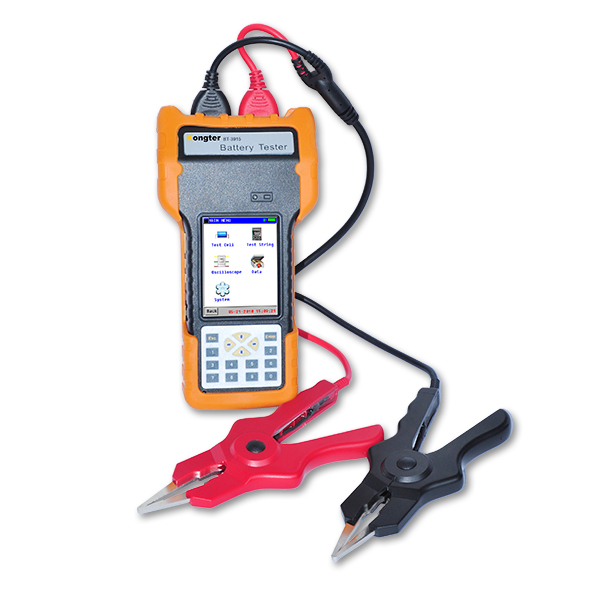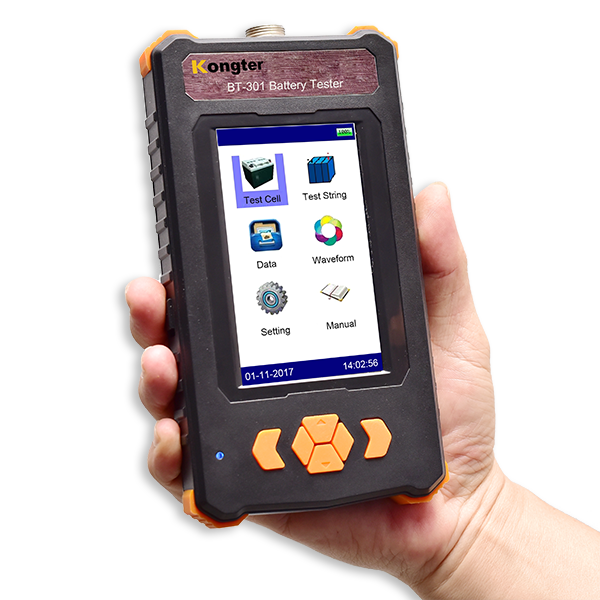Description
- Wide test range: 5~6000Ah, compatible for cell of 1.2V, 2V, 6V and 12V
- Smart and portable hand-held device, rugged and easy-to-go
- Colorful touch screen with optional operations of keyboard and touch screen
- Simultaneously test voltage and internal resistance/conductance
- Fast testing for battery and string in seconds with testing data auto saving
- Strong anti-interference in high current with stable and accurate performance
- Low testing frequency, effectively avoid interference from capacitive resistance
- Direct USB drive for software update and data transfer to computer
- Powerful PC management software, convenient for data storage and analysis
- Big memory for testing data storage of more than 3000 cells
- Buzzer alarm function and over voltage protection
- Auto-calibration function before testing enhances the testing accuracy
- Build-in reference value and self-defined value for comparison of testing result
- Retest and compensation function: any faulty operation or omission could be retested simply with one click
- Optional function: can wirelessly transfer data to IT system via GPRS model
Battery internal resistance tester or conductance tester is much more stable than impedance tester when battery online.
Resistance range | 0.00mΩ~ 100mΩ |
Test resolution | 1mv |
Test accuracy | ±0.2%rdg ±6dgt |
| Power supply | Li-ion battery (7.2V 2400mAh) |
| Working time | More than 5 hours |
| Measuring data memory | >3000 cells |
| Operation environment | 0℃ to 40℃, 90% R.H |
| Measuring cells per string | 1≤cells≤254 |
| LCD display | 320*240 pixel, 3.5” TFT screen |
| Net weight (package) | 2 kg |
| Dimension | L210*W110*H60 mm |
Q: What is the difference among impedance, internal resistance and conductance measurement?
A: Impedance testers and internal resistance testers are using different method of measurement. Impedance testing is generally injecting a current signal to battery so as to measure its resistance. This is proved to be unstable and inconsistent measurement when UPS batteries are in live condition.
Internal resistance test is generally using DC or AC signal discharge to measurement internal resistance and voltage of battery.
Conductance (unit: Simens) measurement is same as that of internal resistance (unit: Ohm). Their relationship is: S=1/R.
Kongter offers both options of measurement for internal resistance and conductance via discharging a low current AC signal. Customers with different measurement habits can find their right solutions accordingly.
BT-301 Battery Condition Analyzer can also switch between internal resistance testing and conductance testing.
Q: Do you use alligator testing clamp or pin probe for measurement of batteries?
A: Kongter offer both alligator testing clamp and pin probe for different types of batteries. User can select either as per their need.
Q: Can we test Resistance/Conductance of multiple blocks of cell once?
A: No, we can’t, because our way of measurement is not the old way of signal injection. Also, measurement of internal resistance or conductance is to help users fast detect the consistency of whole string and figure out the weak batteries with high resistance (or low conductance). Measurement of multiple cells at the same time will make it difficult to judge which cells are weak.
Q: Can I use the tester to measure Ni-cd and Lithium batteries?
A: Yes, besides standard battery types of 2V, 6V and 12V lead acid batteries, there is customized setting in the tester menu where users can add uncommon battery types including Ni-cd and Lithium batteries.
Q: How should I connect the alligator testing clamp or pin probe with battery?
A: To obtain best measurement accuracy and consistency, we will suggest always connect the clamps or pin probes with battery posts.




